Take a Sarasota tour of modernist architecture with us
Join our ultimate Sarasota tour of modernist architecture, to explore some of the finest built-environment heritage in the region

For a Sarasota tour of modernist architecture, look no further than the Sarasota MOD Weekend in Florida – first launched in 2014, and gaining momentum after bringing two formerly separate local architecture organisations under one umbrella: Architecture Sarasota. The festival, which this year ran from 11 to 13 November 2022, is the younger sibling of the Palm Springs Modernism Week, an established celebration of local midcentury modern architecture, attended by a passionate community who live and breathe it, and a global flock of modern-o-philes (see the recent Palm Springs Modernism Week 2023 preview).
Like Palm Springs, Sarasota is a honeypot of exemplary midcentury buildings, though the houses are often a little more hidden thanks to the tropical foliage. The city also has its own unique local architecture movement, the Sarasota School of Architecture, active in the 1950s and 1960s and characterised by its fusing of modernist ideas with experimental, climate-responsive design; combining a Bauhaus approach to industrial materials, Frank Lloyd Wright’s interest in site specificity, and the influence of Southern American and tropical vernacular.
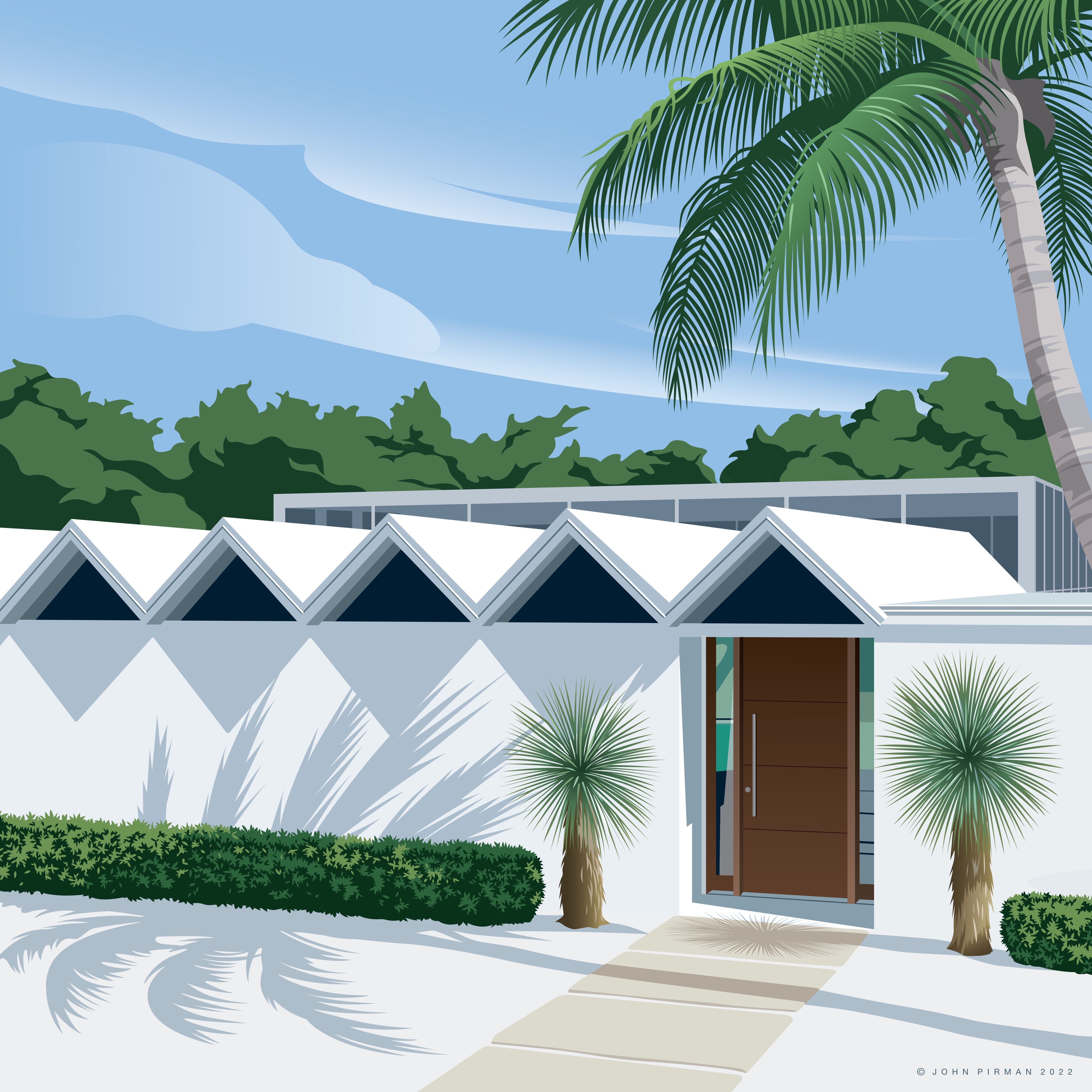
Architecture Sarasota MOD Weekend 2022 graphic: Zigzag House
Highlights of the ninth Sarasota MOD Weekend included Paul Rudolph and Ralph Twitchell’s experimental Cocoon house and Rudolph’s later Sarasota High School with its chunky shading system. Morris Hylton, freshly announced upcoming president of Architecture Sarasota, was involved in an initiative to save another such project, Rudolph's Riverview High School, also in Sarasota, which was sadly later demolished; while working in a previous role at the World Monuments Fund, he designated the very first Modernism At Risk grant to its preservation campaign. Architecture Sarasota continues this passionate work, and is also involved in listing, purchasing and renting properties (such as Cocoon house) so they can remain protected, maintained and open to the public.
'Buildings are three-dimensional objects that are meant to be experienced. Photographs only tell you so much,' says Anne Essner, board chair of Architecture Sarasota, sitting on the sofa in the dynamic double-height living space of the Rudolph-designed Umbrella House. For her, the house visits of MOD Weekend offer an accessible entry point into good architecture and design for all to enjoy: 'Everybody loves houses. People come to get decorating and restoration ideas, and talking to the homeowners is a big component of the visit. It’s all about awareness, and helping people to see what they are experiencing. [With this festival] we want to encourage good design in the built environment on a contemporary basis, as well as stewarding the legacy of the Sarasota School.'
A SARASOTA TOUR OF MODERNIST ARCHITECTURE
Revere Quality House, 1948
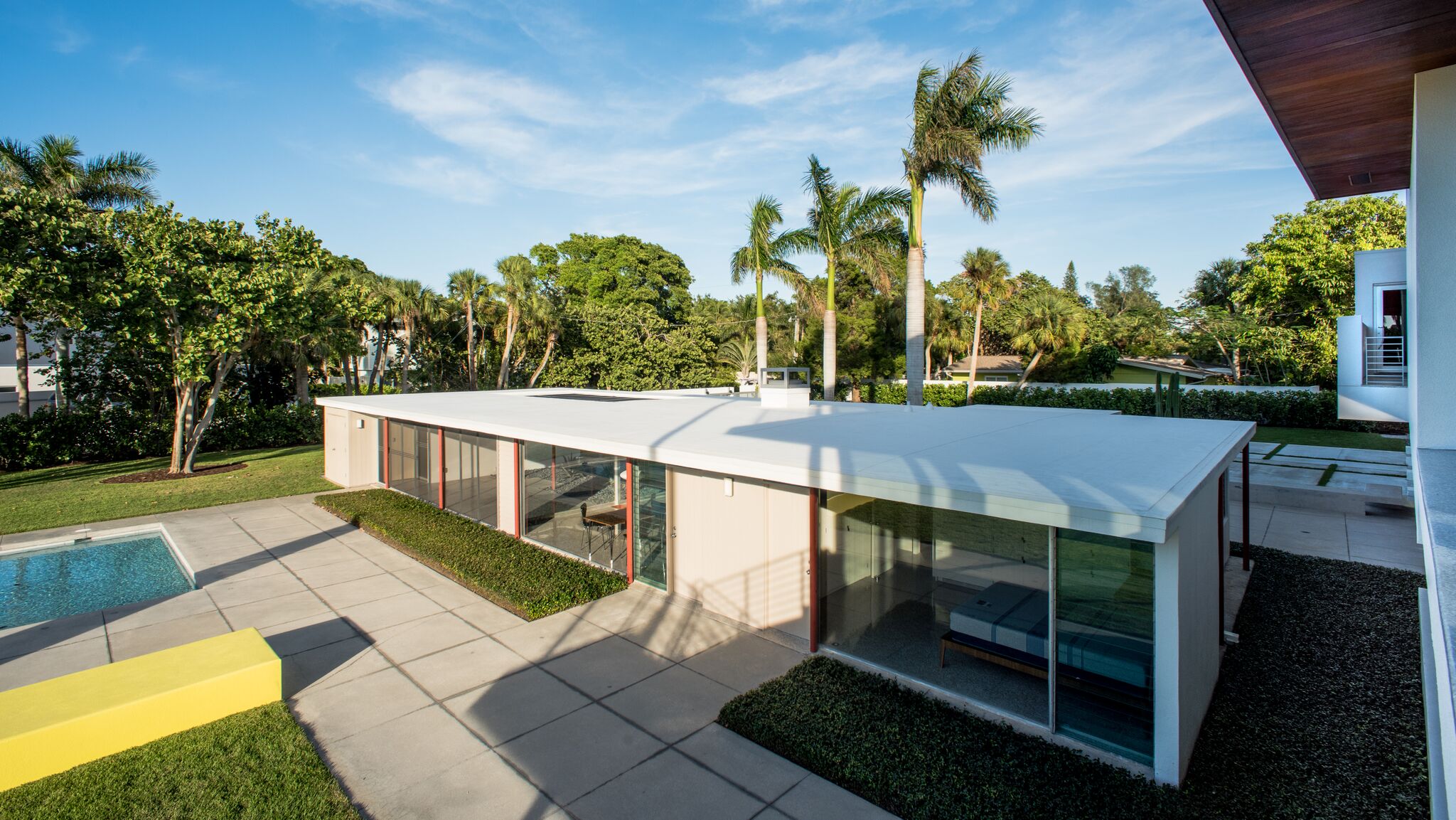
This minimalist house was designed as one of eight industrial prototypes for the Revere Quality Institute, a research arm of the Revere Copper Company. Designed by Ralph Twitchell and Paul Rudolph to the ‘Lamolithic’ method of building, named after local concrete supplier John Lambie, which involved a steel-reinforced cast-in-place concrete structure with 21 steel ‘lally’ columns. (In 2007, a large ‘companion’ property was designed on the same plot by architect Guy Peterson, overshadowing the original house.) The first room to enter is an ‘outdoor room’ with agave plants and a seating area overlooking the pool. Inside, you find a terrazzo floor, plywood room dividers and a copper fireplace hood. Twitchell would move into this house, and live there until his death in 1978.
Healy Guest House/Cocoon House, 1949

The design of Ralph Twitchell and Paul Rudolph’s Healy Guest House (also known as Cocoon House), built for Twitchell’s in-laws, was informed by Rudolph’s experience working in the Brooklyn Naval Yard where he witnessed ships being waterproofed with polymer spray. He trialled the material on the softly U-shaped roof of the Cocoon house, which was harnessed to the ground with five steel ‘straps’. Wood jalousies provided shading, privacy in the residential enclave on Bayou Louise, and cross-ventilation. The house was named a post-war ‘pioneer of design’ in 1953 by the Museum of Modern Art, though in 1955, the roof had to be replaced.
Umbrella House, 1953
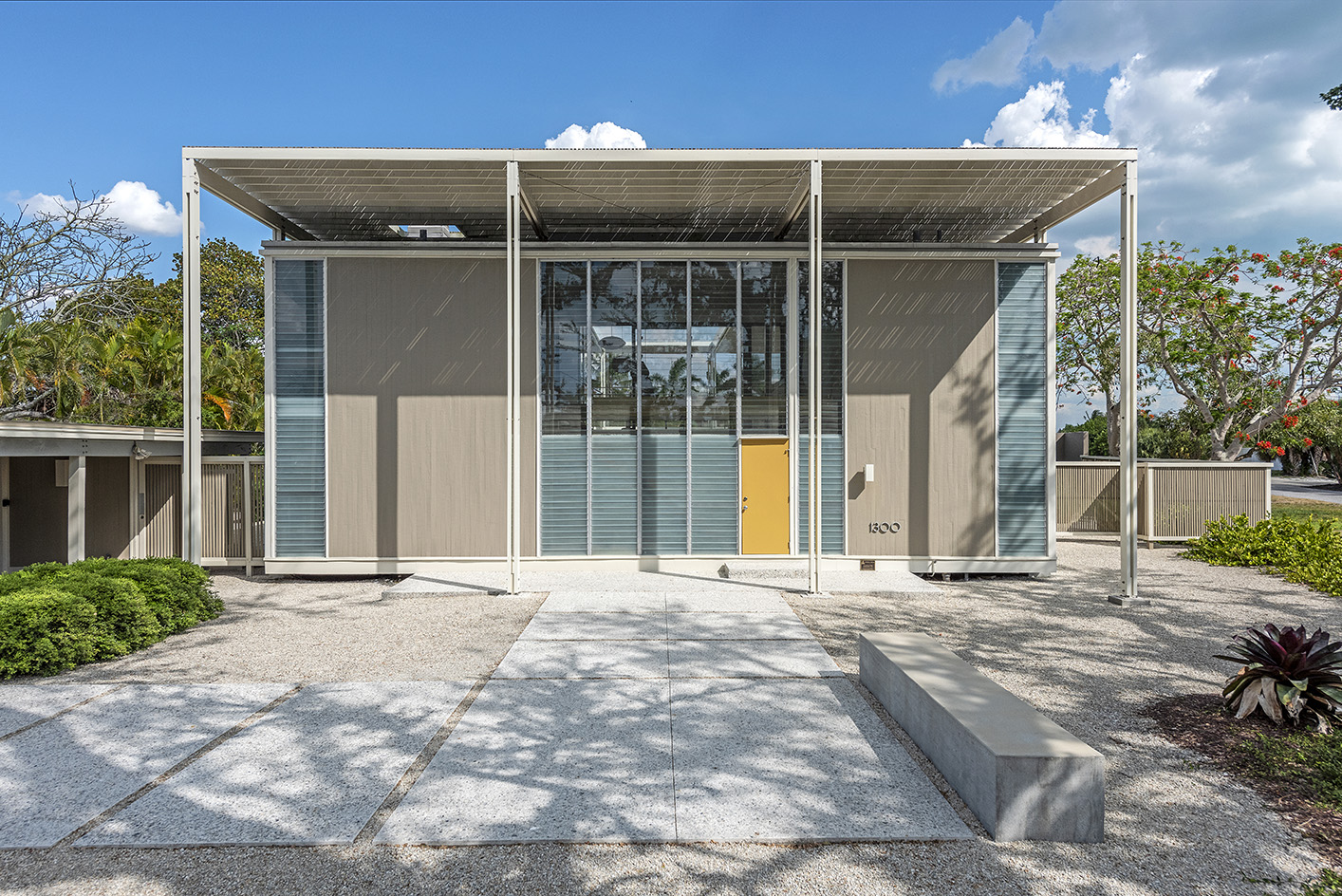
When it comes to Sarasota modernism, it all began when progressive and well-travelled developer Philip Hiss had a vision for creating a wealthy winter enclave with a community vision for modern living. He commissioned up-and-coming architect Paul Rudolph (who had studied under Walter Gropius at Harvard and set up a local partnership with local architect Ralph Twitchell), to build forward-thinking structures for his land, resulting in, amongst others, the Umbrella House, a billboard for his new neighbourhood, Lido Shores. This two-level house was built as a marketing suite for Hiss’ Lido Shores neighbourhood, right next to his studio and on the highway as a billboard to modern living, designed by Rudolph. The structure is a steel grid with jalousie windows, and a huge 10ft shading canopy frames the pool and protects the windows from the sun. The canopy or ‘umbrella’ was originally made of old-growth cypress wood and tomato stakes, then replaced in 2015 with aluminium and steel wire X-bracing to meet hurricane-proof building codes that protect structures from 160mph winds. The ripe ground for building here drew Sarasota School other members Gene Leedy, Victor Lundy, Edward ‘Tim’ Seibert and ‘youngest member of the Sarasota School’ Carl Abbott, an ally of Architecture Sarasota who participated at MOD Weekend, amongst others.
Wallpaper* Newsletter
Receive our daily digest of inspiration, escapism and design stories from around the world direct to your inbox.
Hiss Studio, 1953
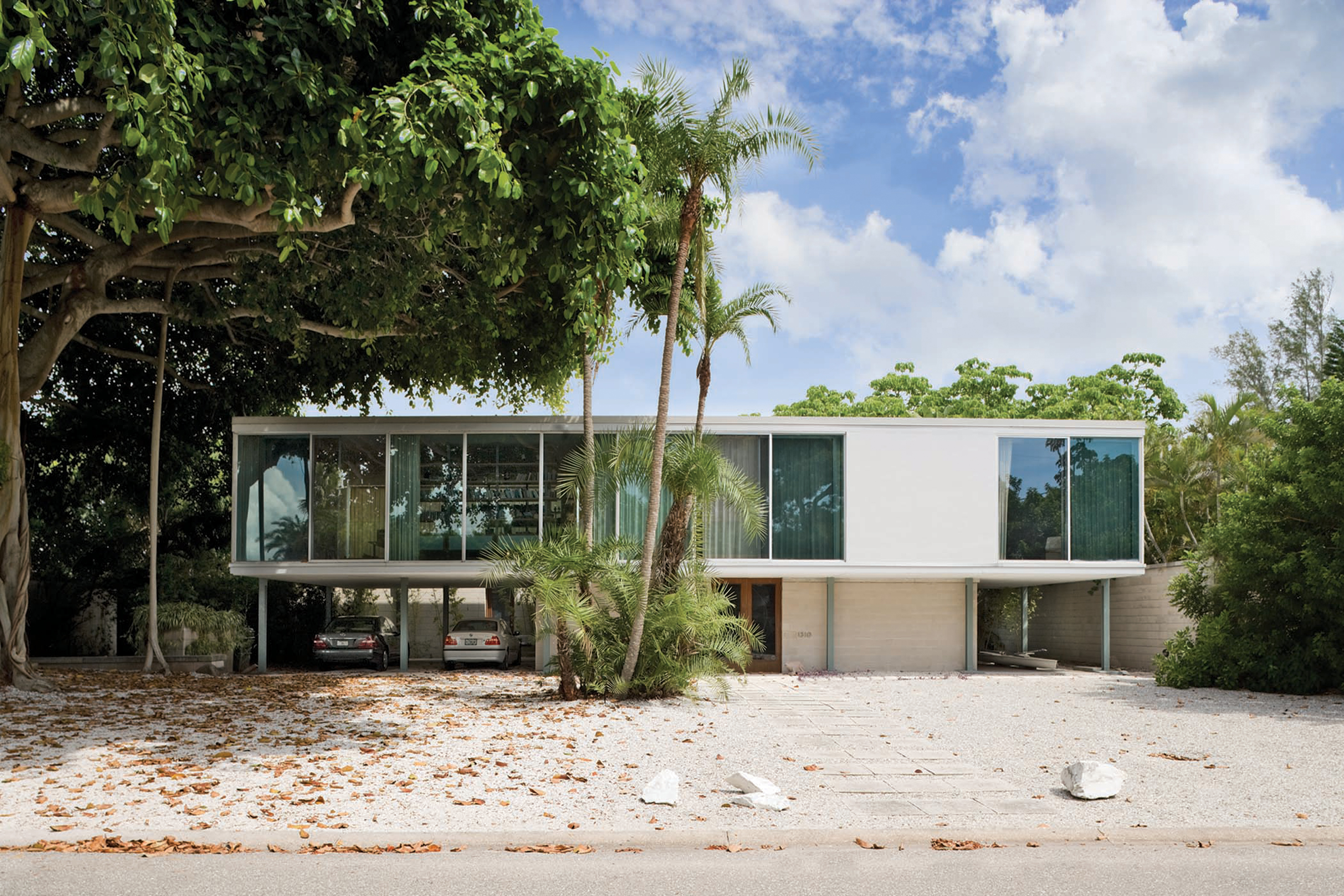
This structure was originally built as the sales office for Philip Hiss’ development company on Lido Shores. The elevated glass box rests on 14 steel columns and was designed to catch the breeze, with shaded space to park underneath the structure. The original oak shelving and cork flooring are preserved. Architect Edward ‘Tim’ Seibert was known as the ‘right hand man’ of Philip Hiss.
Cohen House, 1953-55
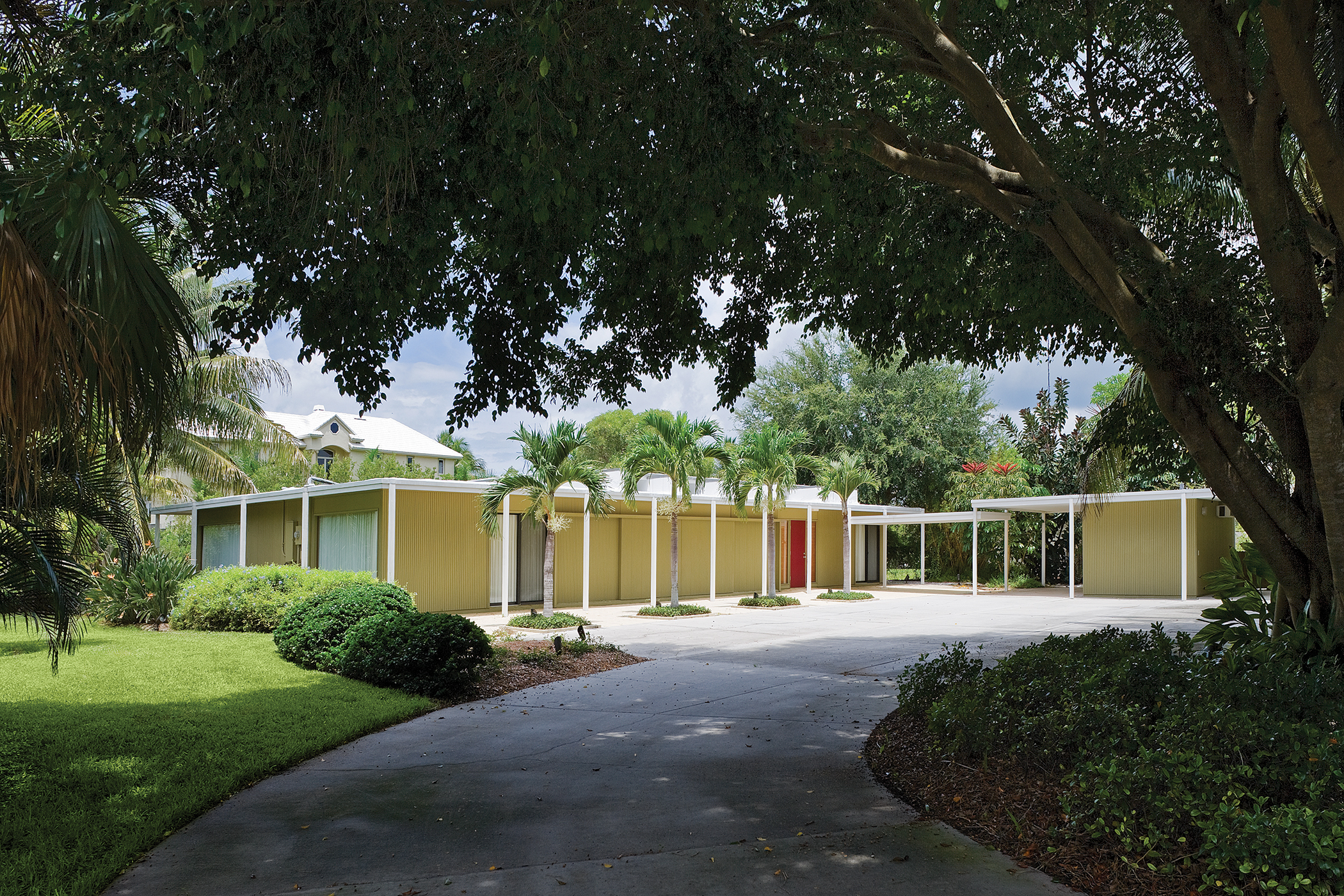
Designed by Paul Rudolph, this house expanded on the architect's Walker Guest House prototype, with the addition of a detached carport and suspended covered walkway. The house overlooks Bayou Louise and has an open-plan interior. It was designed for David Morris Cohen and his wife Eleene Cohen. David was a former City of Sarasota Mayor and co-founded the Florida West Coast Symphony, of which he was a conductor and violinist, while Eleene was a cellist.
Sarasota High School, 1958-60
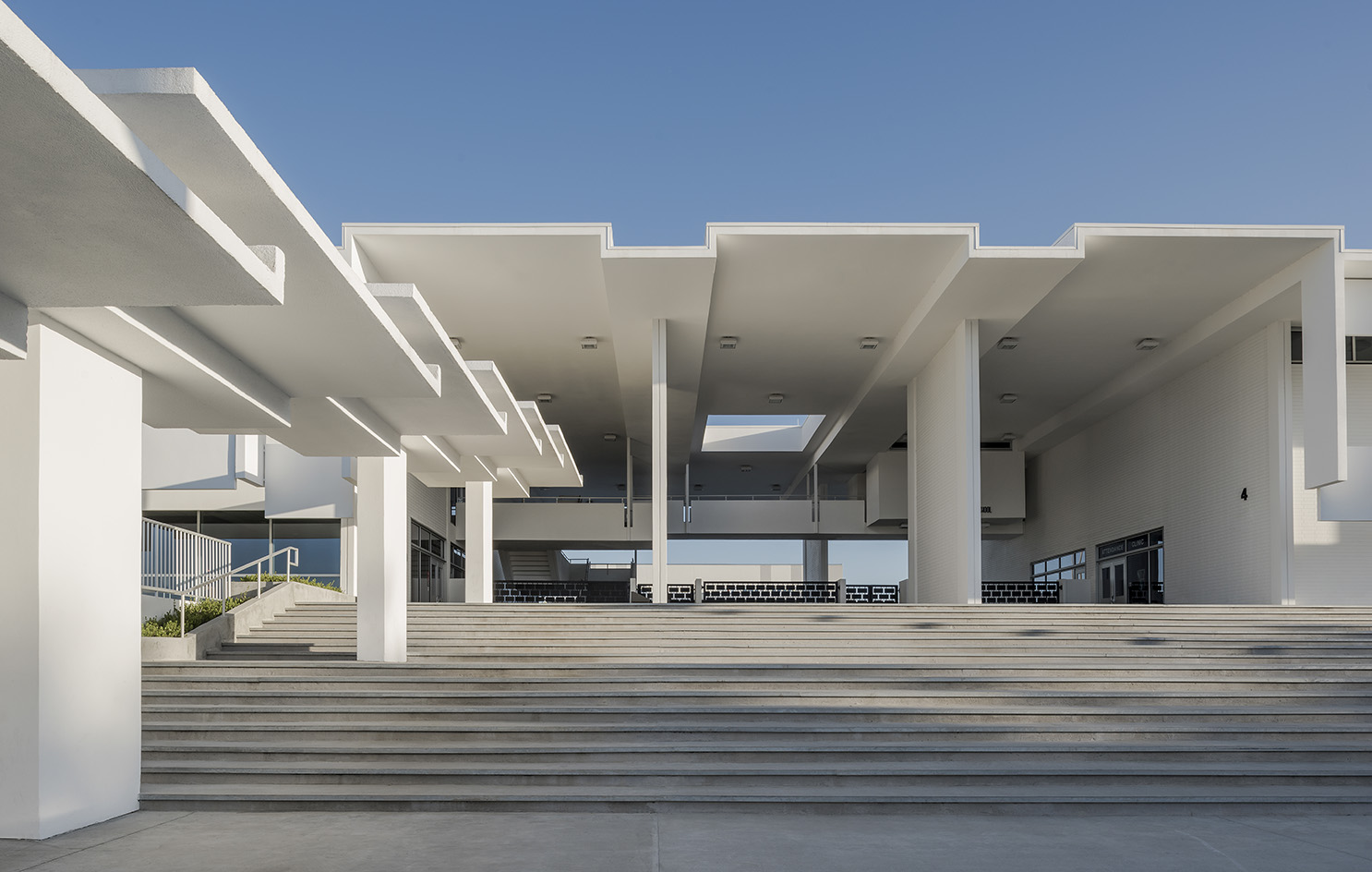
The Sarasota High School expansion was Paul Rudolph’s most high-profile commission in Florida, and follows passive design and sustainable architecture principles. It features a façade of white folded-concrete shading creating an exterior corridor. There is an open-air lobby and before restoration, corridors through the building were part open-air, welcoming a breeze to flow through. Le Corbusier’s Unité d’Habitation and the Dominican monastery of La Tourette were key references for Rudolph here, and the building was a precursor to the Art and Architecture building at Yale University.
Butterfield House, 2015
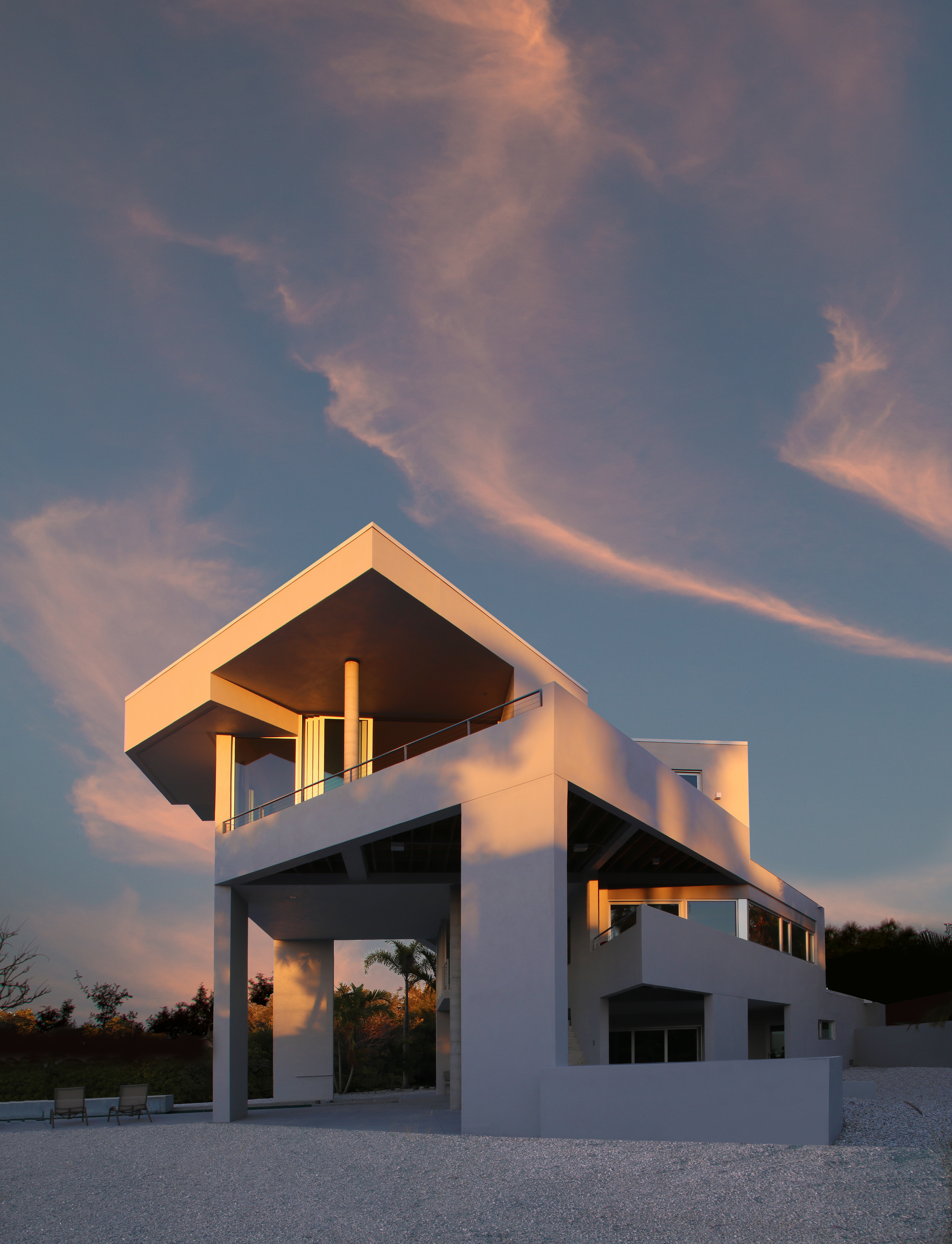
This multigenerational house was designed by Carl Abbott, who studied at Yale under Paul Rudolph, worked with IM Pei in New York and collaborated with Richard Rogers and Norman Foster in London. He set up his practice in Sarasota in the 1960s, becoming the youngest member of the Sarasota School of Architecture. Informed by the surrounding nature and encouraging outdoor living, this house has elevated 180-degree views to the Gulf of Mexico and Lido Key. it features a shaded space beneath the upper levels of the home and is painted grey to reflect the seashells of Siesta Key.
Launched with this year's Architecture Sarasota MOD Weekend, the exhibition, ‘Tropical Modernism: Climate and Design’, at Architecture Sarasota at the McCullough Pavilion, runs 17 November 2022 – 25 February 2023
Harriet Thorpe is a writer, journalist and editor covering architecture, design and culture, with particular interest in sustainability, 20th-century architecture and community. After studying History of Art at the School of Oriental and African Studies (SOAS) and Journalism at City University in London, she developed her interest in architecture working at Wallpaper* magazine and today contributes to Wallpaper*, The World of Interiors and Icon magazine, amongst other titles. She is author of The Sustainable City (2022, Hoxton Mini Press), a book about sustainable architecture in London, and the Modern Cambridge Map (2023, Blue Crow Media), a map of 20th-century architecture in Cambridge, the city where she grew up.
-
 Put these emerging artists on your radar
Put these emerging artists on your radarThis crop of six new talents is poised to shake up the art world. Get to know them now
By Tianna Williams
-
 Dining at Pyrá feels like a Mediterranean kiss on both cheeks
Dining at Pyrá feels like a Mediterranean kiss on both cheeksDesigned by House of Dré, this Lonsdale Road addition dishes up an enticing fusion of Greek and Spanish cooking
By Sofia de la Cruz
-
 Creased, crumpled: S/S 2025 menswear is about clothes that have ‘lived a life’
Creased, crumpled: S/S 2025 menswear is about clothes that have ‘lived a life’The S/S 2025 menswear collections see designers embrace the creased and the crumpled, conjuring a mood of laidback languor that ran through the season – captured here by photographer Steve Harnacke and stylist Nicola Neri for Wallpaper*
By Jack Moss
-
 Croismare school, Jean Prouvé’s largest demountable structure, could be yours
Croismare school, Jean Prouvé’s largest demountable structure, could be yoursJean Prouvé’s 1948 Croismare school, the largest demountable structure ever built by the self-taught architect, is up for sale
By Amy Serafin
-
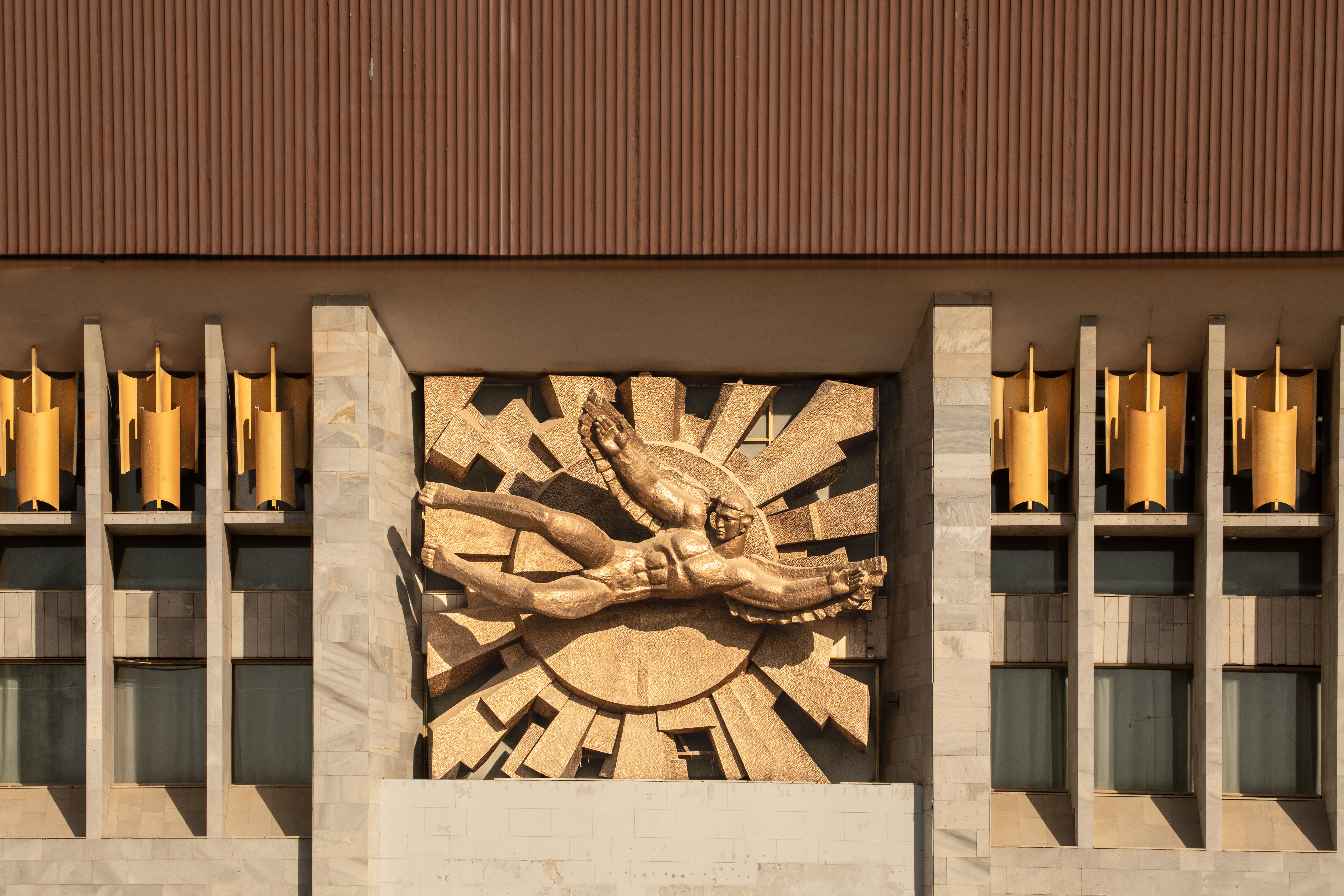 Jump on our tour of modernist architecture in Tashkent, Uzbekistan
Jump on our tour of modernist architecture in Tashkent, UzbekistanThe legacy of modernist architecture in Uzbekistan and its capital, Tashkent, is explored through research, a new publication, and the country's upcoming pavilion at the Venice Architecture Biennale 2025; here, we take a tour of its riches
By Will Jennings
-
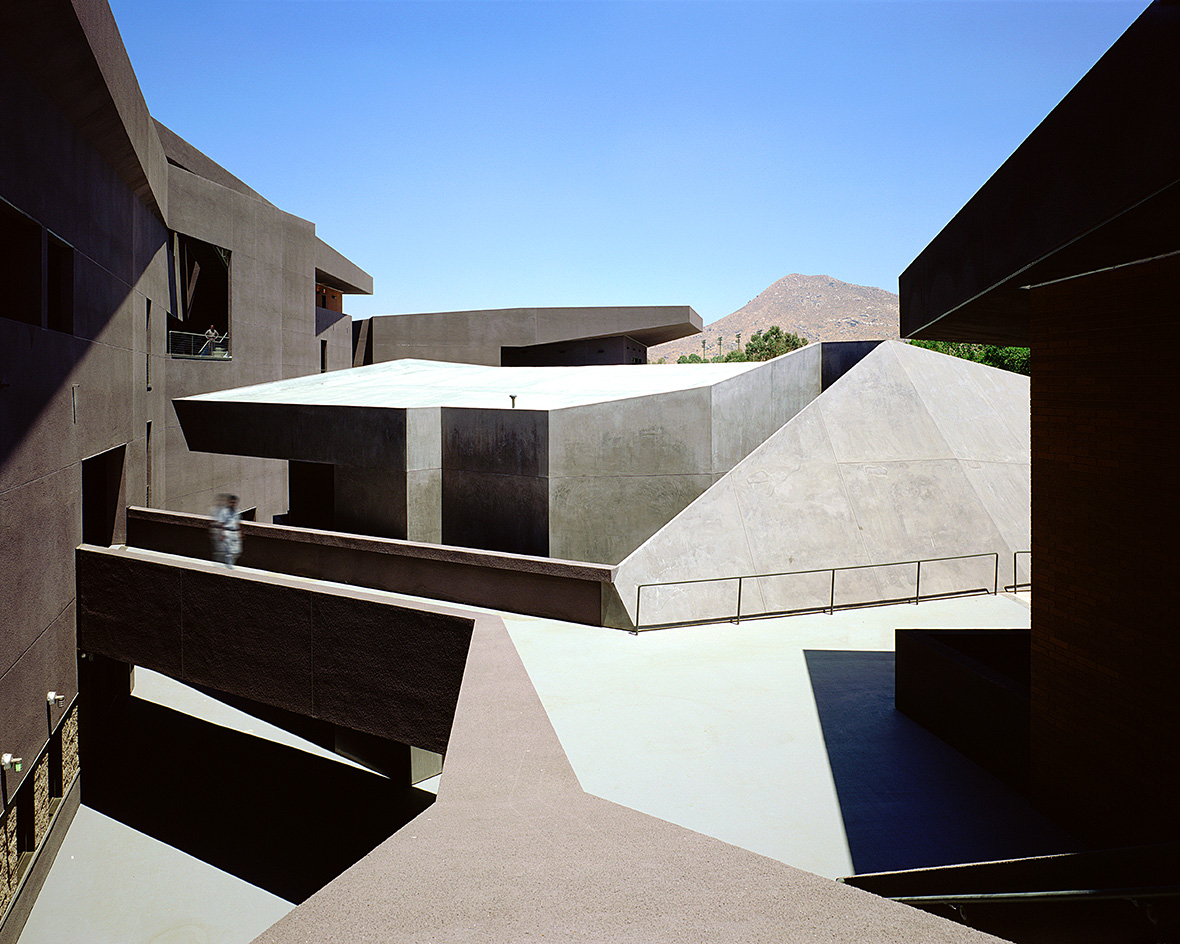 We explore Franklin Israel’s lesser-known, progressive, deconstructivist architecture
We explore Franklin Israel’s lesser-known, progressive, deconstructivist architectureFranklin Israel, a progressive Californian architect whose life was cut short in 1996 at the age of 50, is celebrated in a new book that examines his work and legacy
By Michael Webb
-
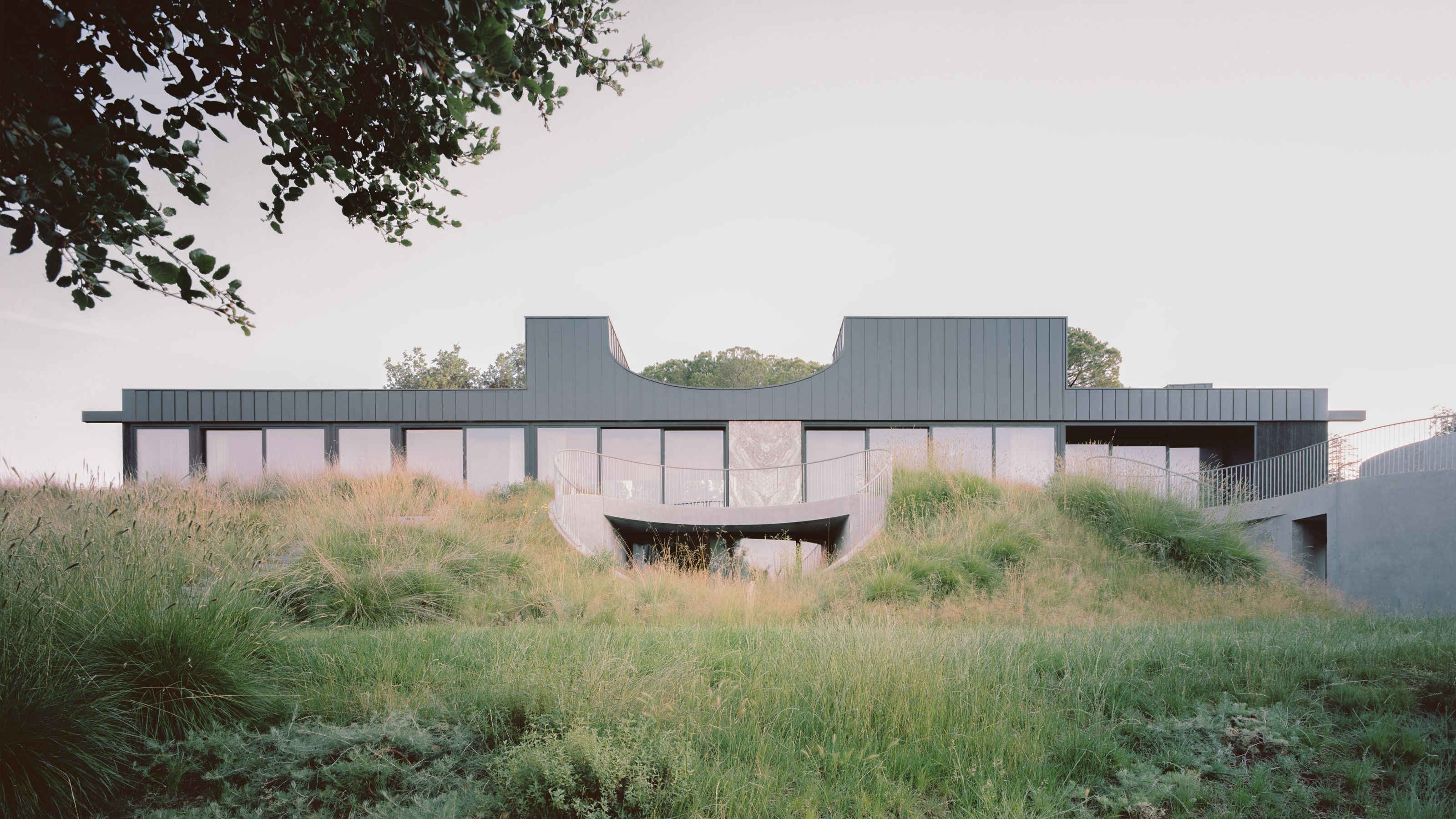 A new hilltop California home is rooted in the landscape and celebrates views of nature
A new hilltop California home is rooted in the landscape and celebrates views of natureWOJR's California home House of Horns is a meticulously planned modern villa that seeps into its surrounding landscape through a series of sculptural courtyards
By Jonathan Bell
-
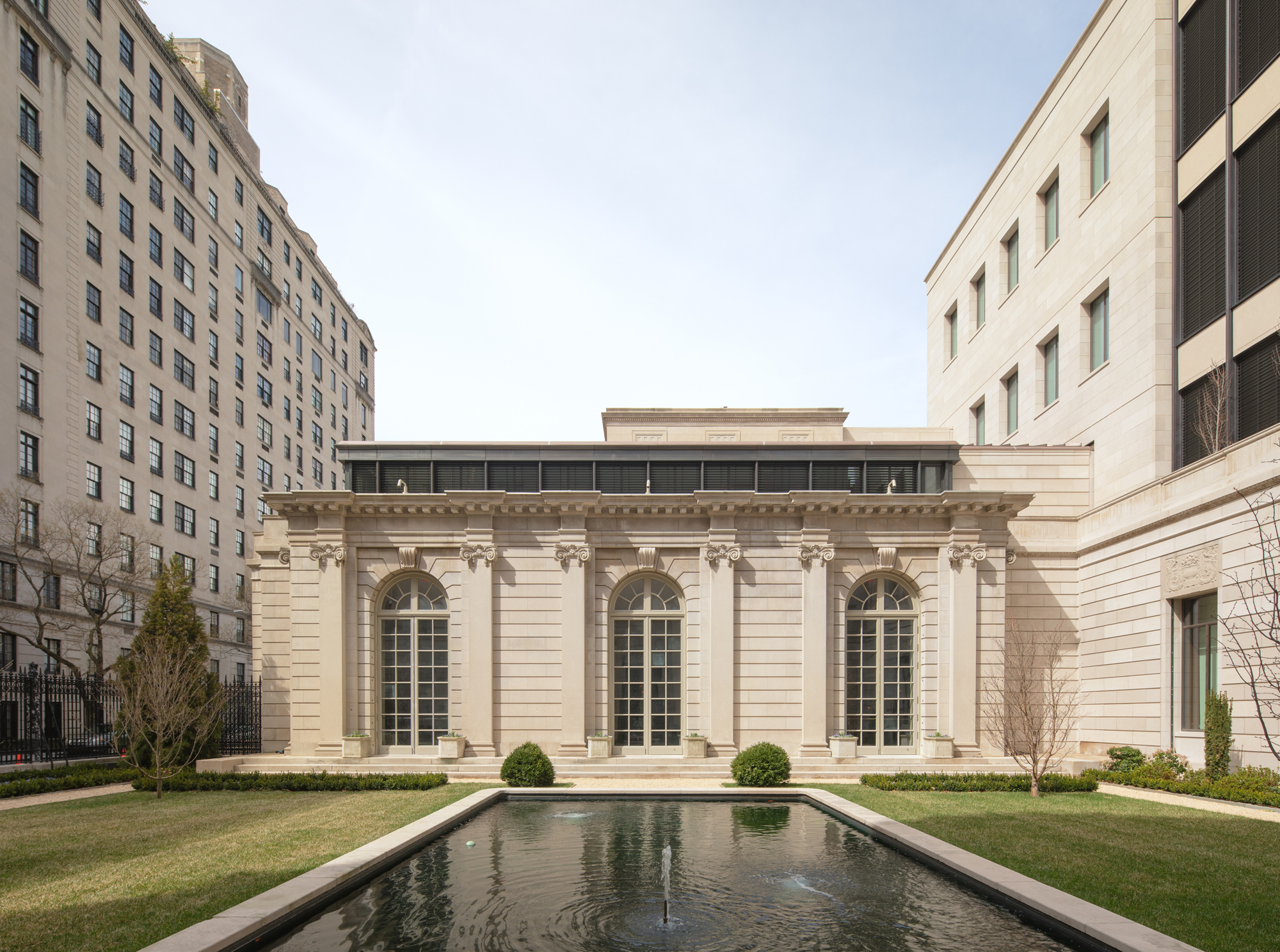 The Frick Collection's expansion by Selldorf Architects is both surgical and delicate
The Frick Collection's expansion by Selldorf Architects is both surgical and delicateThe New York cultural institution gets a $220 million glow-up
By Stephanie Murg
-
 Remembering architect David M Childs (1941-2025) and his New York skyline legacy
Remembering architect David M Childs (1941-2025) and his New York skyline legacyDavid M Childs, a former chairman of architectural powerhouse SOM, has passed away. We celebrate his professional achievements
By Jonathan Bell
-
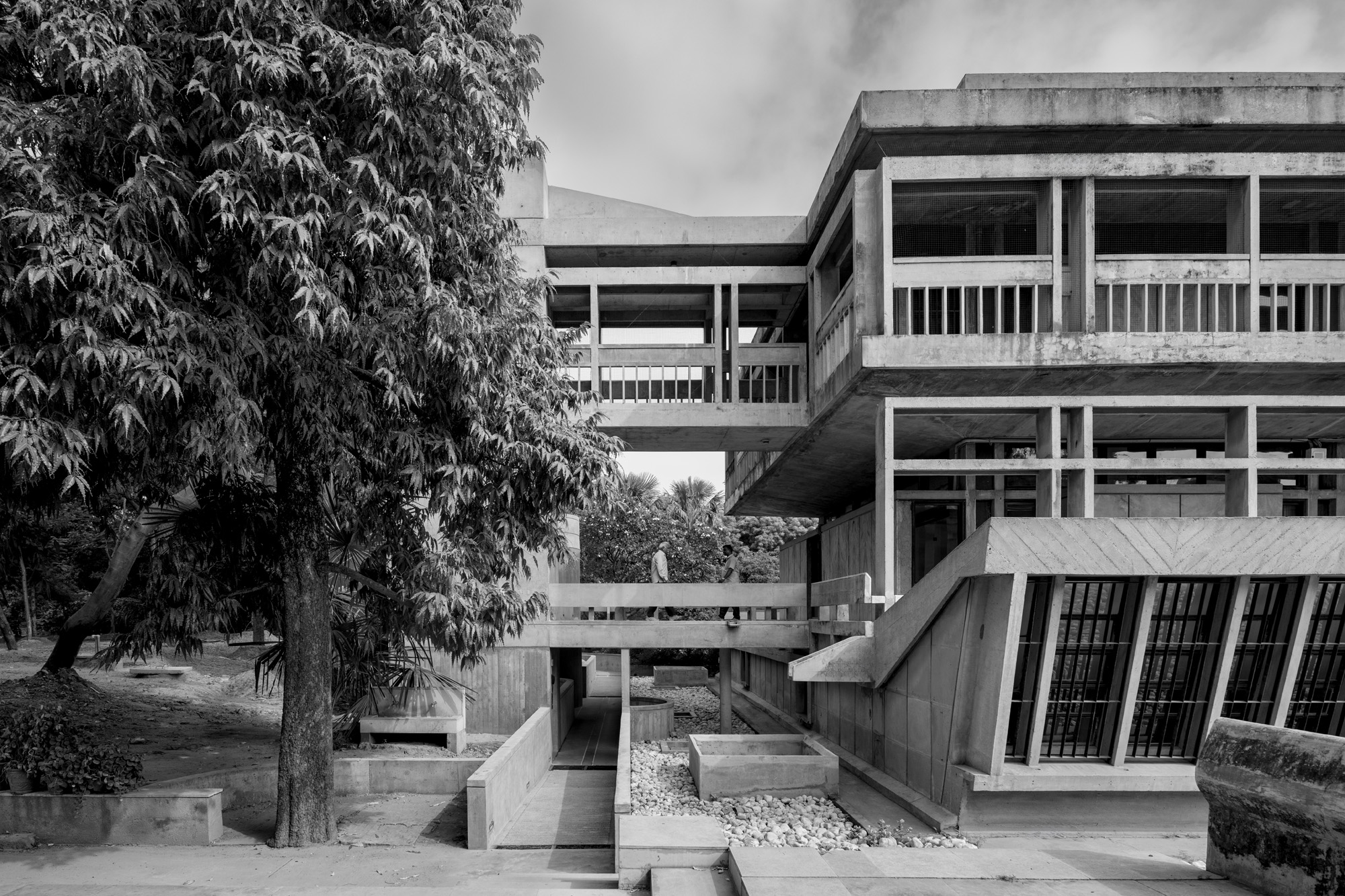 At the Institute of Indology, a humble new addition makes all the difference
At the Institute of Indology, a humble new addition makes all the differenceContinuing the late Balkrishna V Doshi’s legacy, Sangath studio design a new take on the toilet in Gujarat
By Ellie Stathaki
-
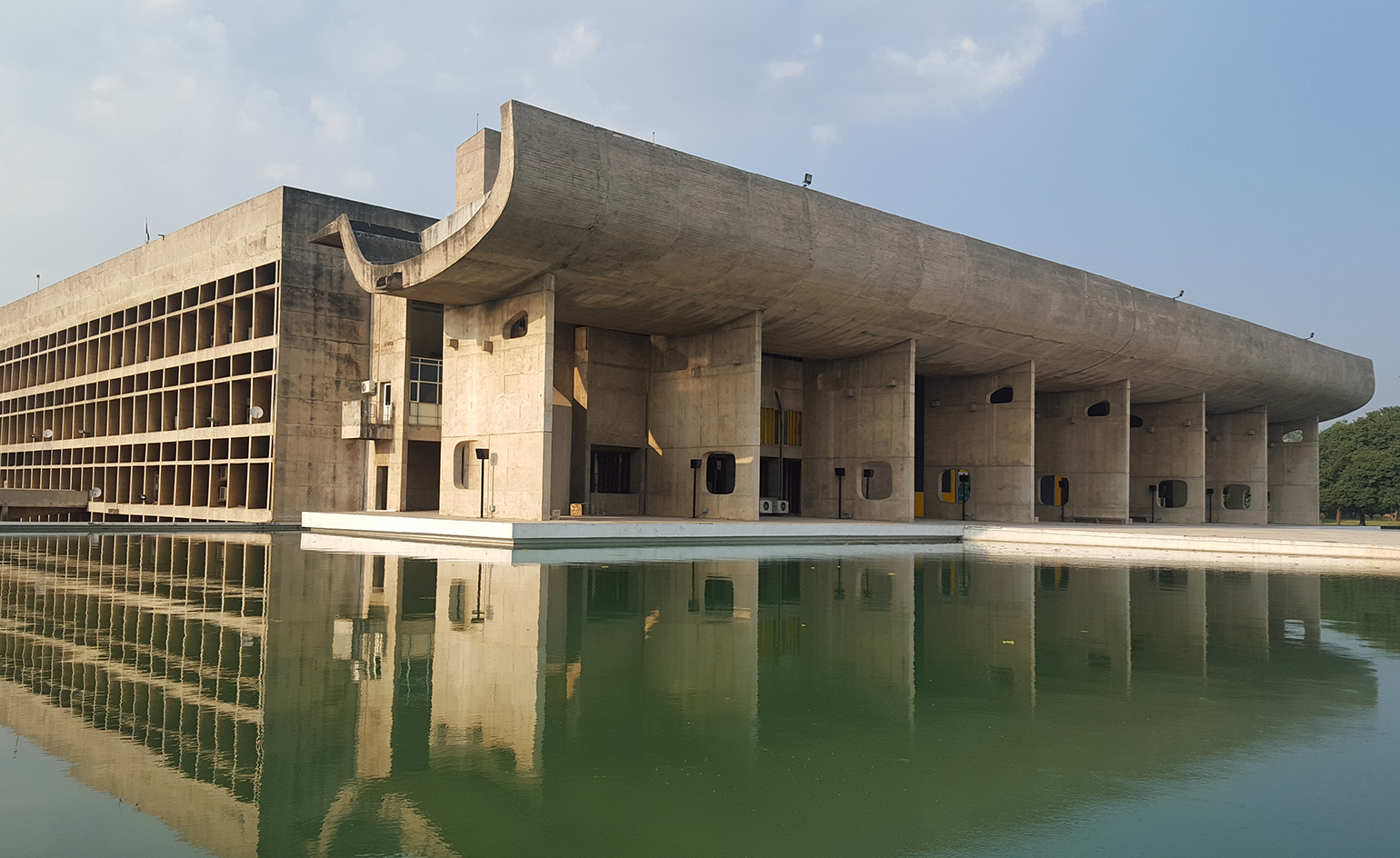 How Le Corbusier defined modernism
How Le Corbusier defined modernismLe Corbusier was not only one of 20th-century architecture's leading figures but also a defining father of modernism, as well as a polarising figure; here, we explore the life and work of an architect who was influential far beyond his field and time
By Ellie Stathaki